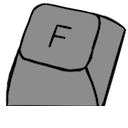Differences
This shows you the differences between two versions of the page.
| Both sides previous revisionPrevious revisionNext revision | Previous revision | ||
| guides:converters_and_conversion_masterpost [02 Feb 2024 21:16] – eris | guides:converters_and_conversion_masterpost [03 Feb 2024 01:52] (current) – eris | ||
|---|---|---|---|
| Line 3: | Line 3: | ||
| **This page covers the most popular protocols. It is not an exhaustive guide. For information on less common protocols, see [[https:// | **This page covers the most popular protocols. It is not an exhaustive guide. For information on less common protocols, see [[https:// | ||
| - | A **converter** is a small device that sits inbetween your computer and a non-USB keyboard, allowing its output to be read as a standard USB human interface device. There are two types of converter, [[terminology: | + | A **converter** is a small device that sits inbetween your computer and a non-USB keyboard, allowing its output to be read as a standard USB human interface device. There are two types of converter, [[terminology: |
| ==== AT, XT and PS/2 ==== | ==== AT, XT and PS/2 ==== | ||
| + | === DIY converters ==== | ||
| + | === Commercial converters === | ||
| + | === Firmware === | ||
| + | There are a variety of firmwares available for active converters for these protocols. However, almost all of them have been superseded by purdeaandrei' | ||
| + | This firmware allows for dynamic remapping, as well as all the other QMK features common to modern keyboards. You will typically see a lot of older content in the hobby talking about Soarer' | ||
| ==== ADB ==== | ==== ADB ==== | ||
| + | === DIY converters ==== | ||
| + | === Commercial converters === | ||
| + | ===Firmware=== | ||
| + | Historically, | ||
